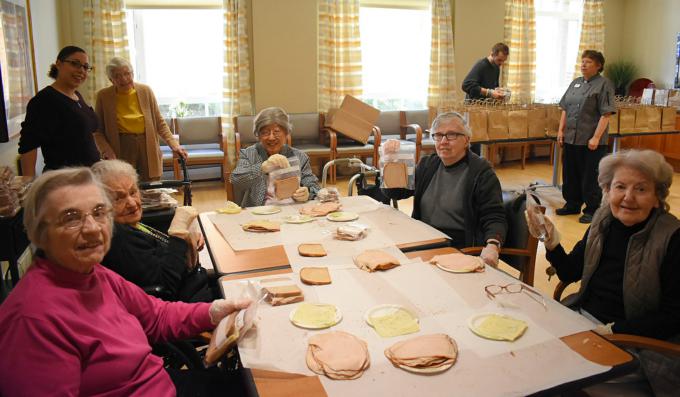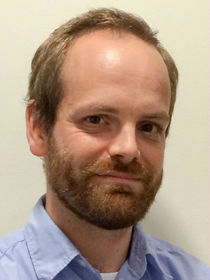
Faith

Johnson
Having an active spiritual life becomes increasingly important as we age. At Youville Assisted Living, emphasis on caring for "Mind, Body and Spirit" is at the heart of our mission. What exactly is the spirit, and how do spiritual practices relate to mind and body?
Maria Benoit, Director of Mission and Spiritual Care at Youville, describes the spirit as "the spark within us," a thing that everyone has at all stages of life. In essence, it is the "spark of life" that animates us. It is why each of us experiences life in a unique way.
Meditation and prayer are among the two most common spiritual practices in the world. These practices not only connect us with faith traditions, but engage the "spark of life" at the center of our being. Given the wide variety of religions and meditation practices, it is remarkable that the effects of prayer and meditation are similar across a wide range of traditions.
Whether you say the Lord's Prayer every day or focus on a mantra, you have probably had the experience of feeling changes in your brain and body as you pray or meditate. This is an example of the overlap between spirit, mind and the rest of the body.
Prayer, Mind and Body
Deeply felt prayers open up the brain in ways unlike other experiences. From a position of intense solitude, prayer opens the mind to a sense of communion.
"For a believer, no audible answer to prayer is required;" writes physician and author Deepak Chopra in a 2013 article for the New York Times. "God is still listening, even though the conversation has silence at the other end. Meditation turns silence into something valuable on its own. In the meditation tradition, this silence is God."
Prayer is different from meditation in that it is a dialogue: we pray with words and we sense that our words are being heard. Paradoxically, prayer is both highly internal and self-transcendent. We pray with others in mind, gaining perspective on relationships and feelings, as well as our relation to God. A study funded by the National Institute of Health found that those who prayed for the well-being of others were 40 percent less likely to have high blood pressure. A report in Psychology Today stated that concern for others "seemed to be contributing to the stress-buffering effects of prayer." Many other studies have linked prayer and altruism to clearer thinking, lower blood pressure and reduced stress. When we pray with others in mind, we establish a greater feeling of connection to something outside ourselves -- whether it is to God, or to people for whom we are praying.
Meditation, Mind and Body
Meditation has been shown to have similar effects on mind and body as prayer. In 1968, Dr. Herbert Benson discovered in that a group of Harvard students could lower their blood pressure through meditation. His in-depth study showed that meditation produced an array of physiological benefits that contributed to reduced blood pressure and reduced stress. Students who meditated regularly also experienced decreased rates of respiration, lower blood lactate levels and more clarity in their thinking.
Based on the results of his research, Dr. Benson developed a meditation technique that maximized these benefits, leading to a state called "The Relaxation Response." It is practiced as follows:
1. Sit quietly in a comfortable position.
2. Close your eyes.
3. Deeply relax all of your muscles, beginning at your feet and progressing up to your face. Keep them relaxed.
4. Breathe through your nose. Become aware of your breathing. As you breathe out, say the word "one" (or any relaxing, simple sound. Ideally, a mantra should not have a meaning to you) silently to yourself. For example, breathe in ... out, "one," -in ... out, "one," etc.
5. Breathe easily and naturally.
6. Continue for 10 to 20 minutes. You may open your eyes to check the time, but do not use an alarm. When you finish, sit quietly for several minutes, at first with your eyes closed and later with your eyes opened. Do not stand up for a few minutes.
7. When distracting thoughts occur, don't worry. Just return to the mantra, without dwelling on your thoughts.
8. Practice the technique once or twice daily, but not within two hours after any meal, as the digestive process seems to interfere with the elicitation of the "Relaxation Response." (from ''The Relaxation Response,'' p. 162-163, Dr. Herbert Benson)
A life that incorporates spiritual practices like prayer, meditation, or both, is likely to be a happier, calmer, less-stressed life. "Caring for the whole person," as Benoit likes to say, "is when healthy mental, physical and spiritual practices are integrated and complement one another."
- Adam Johnson writes for Youville Assisted Living Residences, member of Covenant Health Systems, a Catholic, multi-institutional health and elder care organization serving New England.
Recent articles in the Faith & Family section
-
Scripture Reflection for April 21, 2024, Fourth Sunday of EasterJem Sullivan
-
The new Temple: How Easter changes religionDr. R. Jared Staudt
-
The wonder of Ordinary TimeLucia A. Silecchia
-
Is there still responsibility for past sins after confession?Jenna Marie Cooper
-
Wounds, not scarsJaymie Stuart Wolfe


















